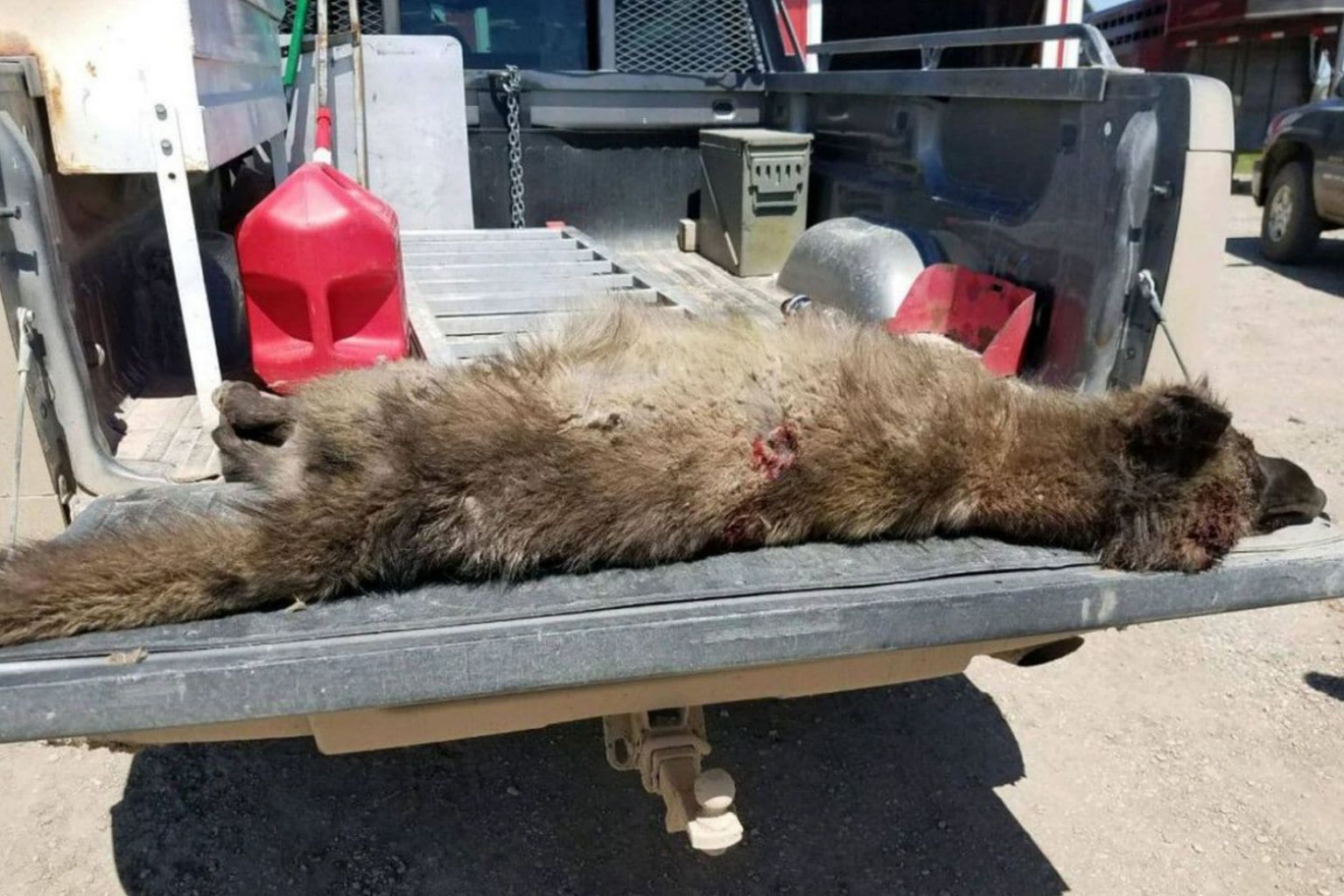A wolf-like creature killed stalking livestock in Montana; US authorities have no idea what it is
Sign up now: Get ST's newsletters delivered to your inbox

The wolf-like creature that was killed in Montana. The dead animal's canine teeth were too short, the front paws were tiny for a wolf, and the claws on its paws were too long.
PHOTO: THE WASHINGTON POST
Follow topic:
WASHINGTON (WASHINGTON POST) - In Montana, it's legal to shoot wolves that get perilously close to people or livestock, and that's exactly what a rancher in Denton thought he did, putting a bullet into something with four legs and canine teeth that came within stalking distance of his herd.
But when he summoned wildlife officials to investigate, something was off.
The dead animal's canine teeth were too short, the front paws were tiny for a wolf, and the claws on those paws were too long. The ears were too big as well, experts told The Washington Post, and the coat was wrong. This was no wolf.
It was a young, non-lactating female and a canid, or member of the dog family, Montana wildlife officials concluded, but that's about as far as animal experts got.
"We have no idea what this is," Bruce Auchly, information manager for Montana Fish, Wildlife and Parks. "And we won't know until we get the DNA tests back." But from that vacuum of information has sprung not-quite-educated guesses from armchair taxonomists and conspiracy theorists - people who have spent entirely too much time staring at a picture of a carcass of a wolfish creature on the tailgate of a pickup truck.
Their leading theories about the mystery creature:
- It's Bigfoot: Because it's large and hairy and unexplained.
- It's a dogman: Think bigfoot with a snout. Or, as a website dedicated to dogman encounters defines them: "cryptozoological beings that are large and sometimes described as looking like upright canids." "They're spotted each day and the government quells any and all reports," one person on social media said, according to the Great Falls Tribune.

"Several people report being strong armed into keeping quiet about their reports by men wearing black suits. These are just facts." Some dogmen look like a stretched out dog that walks on two feet. Others look like a Sasquatch with a Doberman's face.
- It's a dire wolf: Dire wolves were native to the Americas and larger than their cousins, the gray wolf. But they went extinct more than 10,000 years ago, The Washington Post's Karin Brulliard reported.
Thousands of dire wolf skeletons have been found in the La Brea Tar Pits, according to the BBC.
Auchly, with Montana Fish, Wildlife and Parks, doesn't put much stock in that theory.
"First off, 'Dire Wolf' was a wonderful song by The Grateful Dead in about 1971. I know I listened to it a lot," he said. "In reality a dire wolf is a prehistoric mammal from the age of mammoths and saber tooth tigers."
But it could be a dire wolf 2.0. A breeder in southern Oregon has spent the past three decades trying to create a new sort of dog called the American Alsatian that would look very much like the extinct species.
- It's a wolf-dog hybrid: Wolves and dogs are interfertile, according to the International Wolf Center, meaning they can interbreed and produce offspring that can then produce more offspring.
"We've had a few instances of wolf/dog hybrids out there," Ty Smucker, wolf management specialist for Montana FWP, told the Tribune. "One was out somewhere in eastern central Montana killing sheep like crazy. Finally, we caught it and it turned out to be a hybrid." Hybrids can be unpredictable.
When wolves reach sexual maturity, hormonal changes can trigger behaviour changes, making animals more stubborn or aggressive, the Wolf Center says.
Wildlife officials are not relying on the armchair theories about the wolflike creature. They sent the carcass to the department's lab in Bozeman.
Researchers there will take tissue samples and ship them to the US Fish and Wildlife Service Laboratory in Oregon.
There, scientists will extract DNA from cells looking for specific DNA markers, which will be compared to known species.
"Social media was quick to pronounce the animal as everything from a wolf to a wolf hybrid to something mythical," the wildlife agency's news release said. "...It may be awhile before the anyone really knows what the animal near Denton really was."

